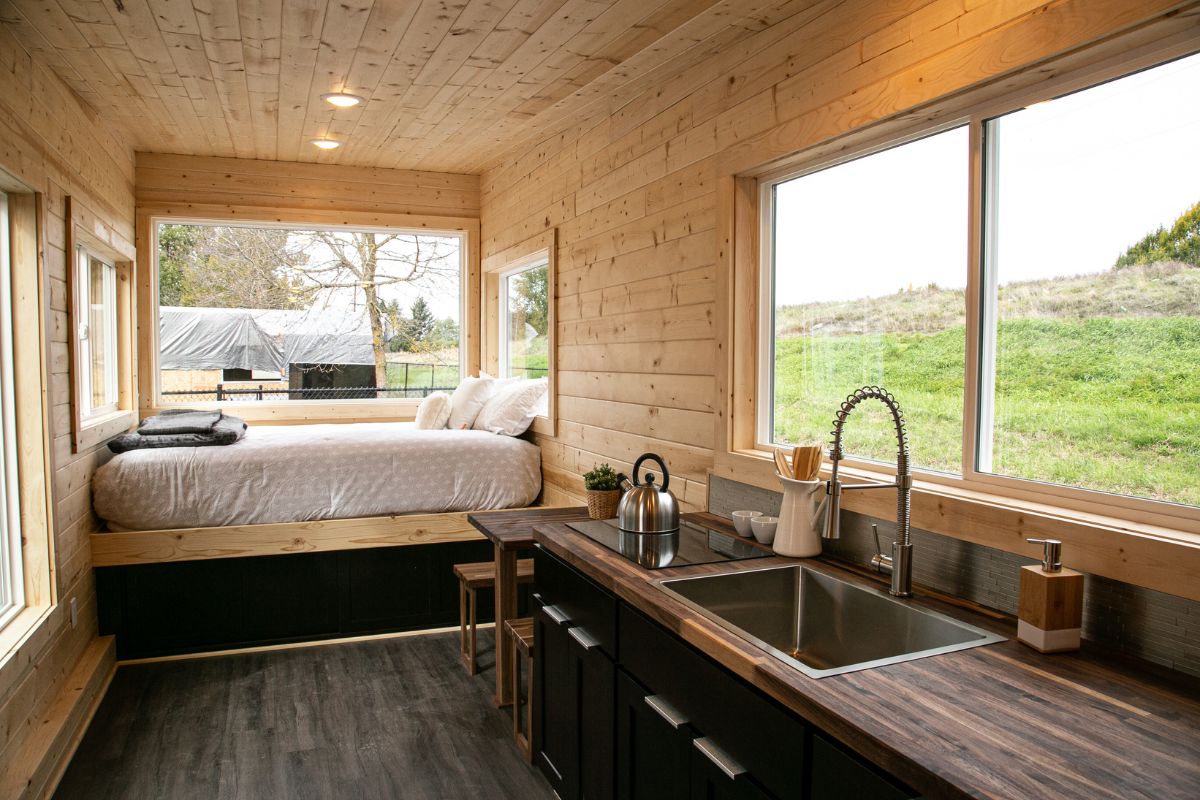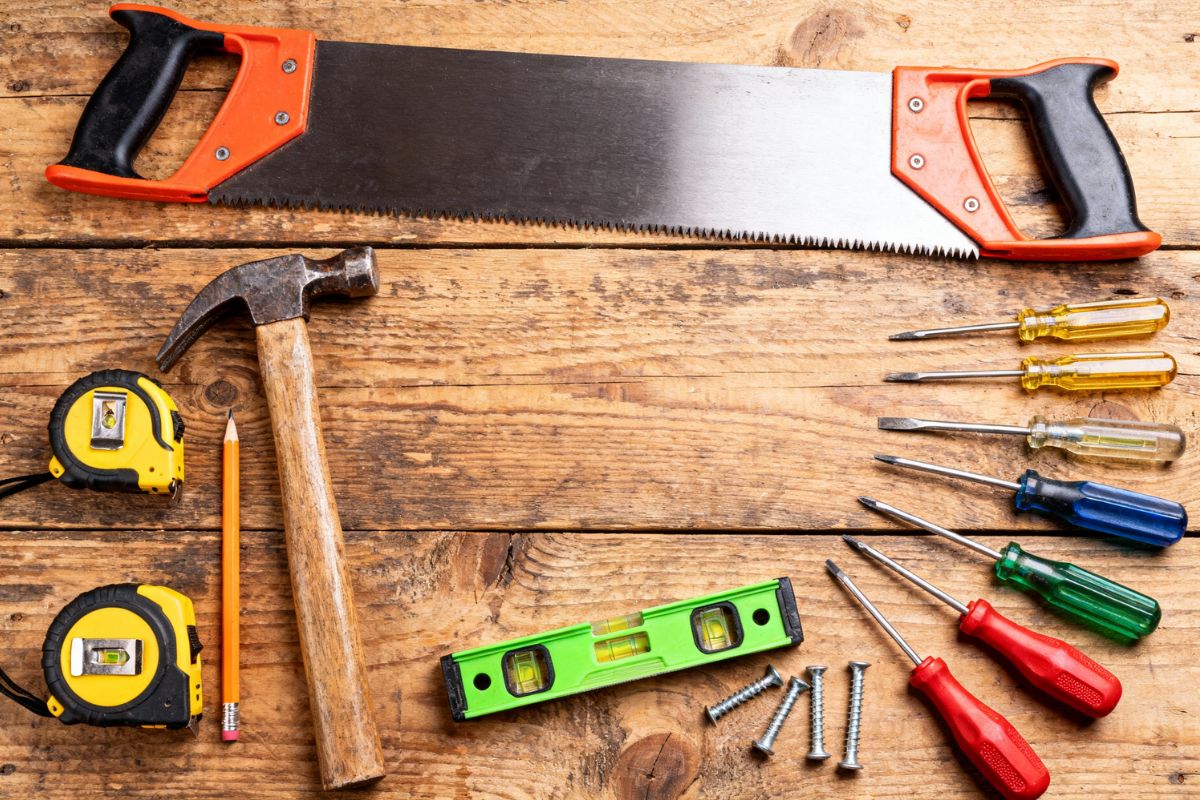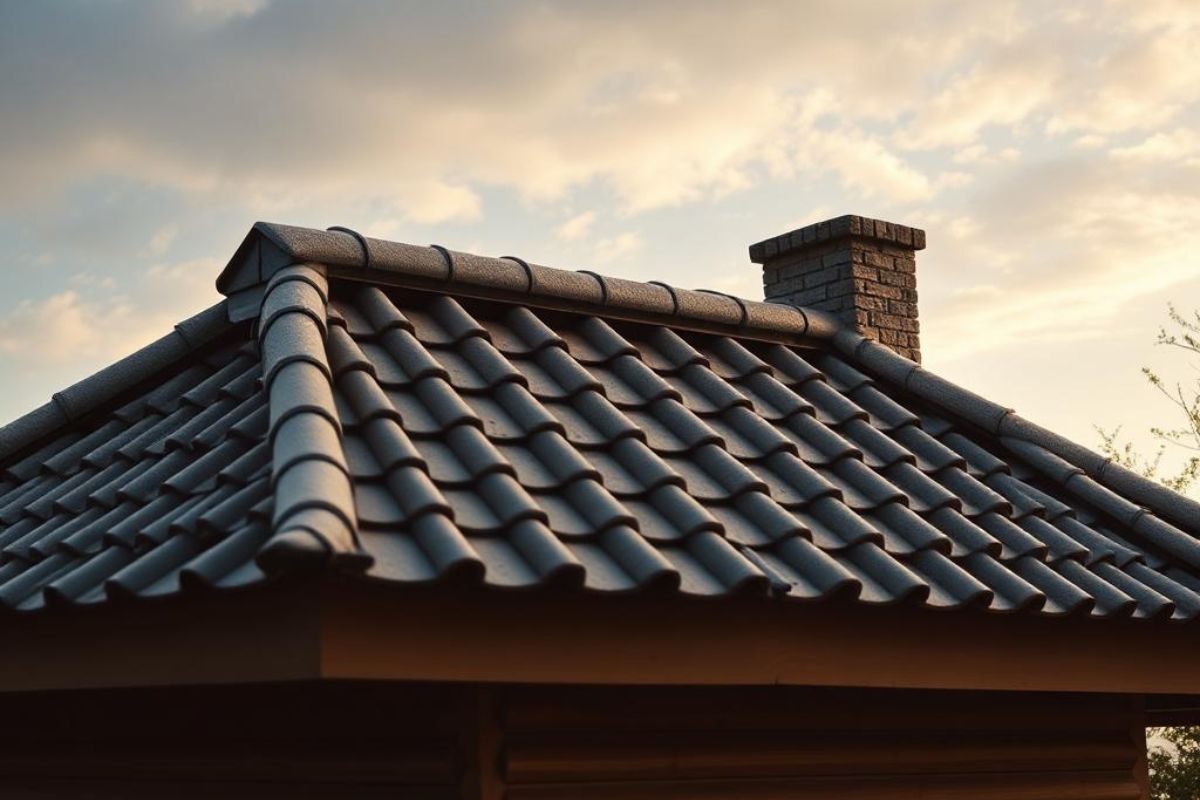.png)
Benefits of One-Story Designs
In regard to tiny house designs for seniors, one-story layouts offer numerous benefits that can't be ignored.
First and foremost, they're safer. Without stairs, you minimize the risk of falls, a common concern as you age. Every essential area, from the bedroom to the bathroom, stays on one level, making daily routines easier and less physically demanding.
These designs also improve accessibility. You won't have to worry about maneuvering steps or ladders, ensuring that every part of your home is within easy reach. This is particularly important if you're using mobility aids like walkers or wheelchairs.
Plus, it's simpler to implement universal design features, making your space more adaptable to changing needs over time.
One-story tiny houses are more energy-efficient too. Heating or cooling a single level requires less energy, which can save you money on utility bills.
Maintenance becomes easier as well. Cleaning and repairs are more straightforward when you don't have to tackle multiple levels.
Essential Mobility Features
When planning a tiny house for seniors, incorporating crucial mobility features is imperative to guarantee both safety and comfort. Start with a step-free entrance to eliminate tripping hazards. A ramp or low-threshold entryway guarantees easy access for those using walkers or wheelchairs.
Install handrails and grab bars in key areas like the bathroom and along hallways to provide extra support. Inside, choose non-slip flooring materials to prevent falls. Hardwood, laminate, or textured vinyl are excellent options.
Ensure doorways are wide enough—at least 32 inches—to accommodate mobility aids. This often involves specific planning for the door rough opening during construction to achieve the necessary clearance. Lever-style door handles are easier to use than traditional knobs, especially for those with arthritis. Consider the height of various fixtures. Lower light switches and raised electrical outlets are easier to reach.
In the bathroom, a walk-in shower with a built-in bench and handheld showerhead offers both convenience and safety. A raised toilet seat can also make a significant difference.
Lastly, good lighting is crucial. Use bright, even lighting throughout the house to reduce the risk of accidents. Motion-sensor lights can be particularly helpful in hallways and bathrooms.
Space-Saving Layouts
Designing a tiny house for seniors calls for a clever use of space to guarantee every square foot serves a purpose.
You'll need to think about multifunctional furniture and smart storage solutions. For instance, a bed that folds into the wall can open up floor space during the day. Built-in shelving units and under-bed storage options make it easy to keep essentials within reach while reducing clutter.
.png)
Consider an open floor plan to maximize the sense of space. An open kitchen and living area can create an airy, welcoming atmosphere. Use sliding doors instead of hinged ones to save precious space. You can also install pocket doors that disappear into the walls.
Don't forget about vertical space. High ceilings with loft storage or shelving can keep items off the ground, making the home feel more spacious.
Choose furniture that doubles as storage, like ottomans with hidden compartments or coffee tables with built-in drawers.
Comfortable Living Areas
Creating comfortable living areas in a tiny house for seniors involves more than just choosing the right furniture—it's about crafting a space that feels like home.
Start by selecting multi-functional furniture that maximizes limited space. A sofa that converts into a bed can be a game-changer, offering both seating and an extra sleeping area for guests.
Lighting plays an essential role in comfort. Use a mix of natural and artificial lighting to create a warm, inviting atmosphere.
Large windows can flood the space with daylight, while strategically placed lamps provide soft illumination in the evening.
Consider the layout carefully. Open floor plans can make a small space feel larger and more accessible.
Arrange furniture in a way that promotes easy movement, especially if mobility is a concern.
Avoid clutter by selecting pieces with built-in storage, like ottomans or coffee tables with drawers.
Accessible Kitchens and Bathrooms
Accessible kitchens and bathrooms are vital in tiny house designs for seniors, providing both safety and convenience.
In the kitchen, you'll want lower countertops and cabinets, so everything is within easy reach. Opt for pull-out shelves and drawers that glide smoothly to avoid any bending or straining. Installing a sink with a shallow basin and a single-lever faucet can make daily tasks much easier, especially for those with arthritis.
In the bathroom, a walk-in shower with a built-in seat is a must. It minimizes the risk of falls and offers a comfortable spot for bathing. Non-slip flooring is another significant feature, providing extra traction to prevent accidents. Grab bars strategically placed around the shower and toilet area offer additional support and stability.
Consider a raised toilet seat to reduce the effort required to sit down and stand up. Lever-style handles on doors and faucets are easier to operate than traditional knobs.
Additionally, adequate lighting is essential in both spaces. Motion-sensor lights can be particularly beneficial for nighttime use, illuminating the path without needing to fumble for a switch.
These thoughtful design elements guarantee a more comfortable and safer living experience for seniors.
Safety and Security Enhancements
When considering tiny house designs for seniors, safety and security improvements should be a top priority.
Start with non-slip flooring to prevent falls, especially in high-traffic areas like the kitchen and bathroom. Install grab bars in strategic locations for additional support. Guarantee that all pathways are free of obstacles and well-lit with motion-sensor lights for nighttime navigation.
Next, think about security measures. An easy-to-use security system with cameras and alarms can provide peace of mind. Smart locks that allow for keyless entry make it easier for seniors to control who enters their home. Consider installing a video doorbell, so they can see who's at the door without having to open it.
Fire safety is essential, so equip the tiny house with smoke detectors and fire extinguishers and make sure you have experts ready to contact, like the Los Angeles fire protection. Confirm that all electrical outlets and appliances are up-to-date and in good working condition to prevent electrical fires.
Lastly, medical alert systems can be lifesavers. These devices can immediately connect seniors to emergency services if they need help.
Customization Options
While safety and security improvements lay the foundation for a senior-friendly tiny house, customization options truly make it feel like home. You can start by choosing furniture that's both functional and comfortable. Opt for chairs with high backs and good lumbar support, and consider a bed with an adjustable base to make getting in and out easier.
Next, think about the kitchen. Lower countertops and pull-out shelves can make cooking more accessible. Installing a microwave at counter height, rather than above the stove, reduces the risk of spills and burns.
Bathroom modifications are essential. Walk-in showers with non-slip floors and grab bars guarantee safety, but you can also add a hand-held showerhead for convenience. A raised toilet seat can make a big difference in comfort and ease of use.
.png)
Don't forget about personal touches. Whether it's a favorite color scheme, cherished photographs, or custom-built shelves for your book collection, these elements make your tiny house uniquely yours.
Lastly, consider technology. Smart home devices, like voice-activated lights and thermostats, not only add convenience but also improve safety.
With the right customizations, your tiny house will be a perfect blend of comfort, safety, and personal style.
Conclusion
In a one-story tiny house, you'll find a perfect blend of safety, accessibility, and comfort tailored just for seniors. With step-free entrances, wide doorways, and non-slip flooring, you can move around effortlessly. Space-saving layouts and multifunctional furniture guarantee a cozy, inviting atmosphere. Accessible kitchens and bathrooms make daily tasks a breeze. Plus, with customizable options, your tiny house can truly feel like home while keeping you safe and secure.






Share: